The 21st
LaureateSculpture
Richard Long
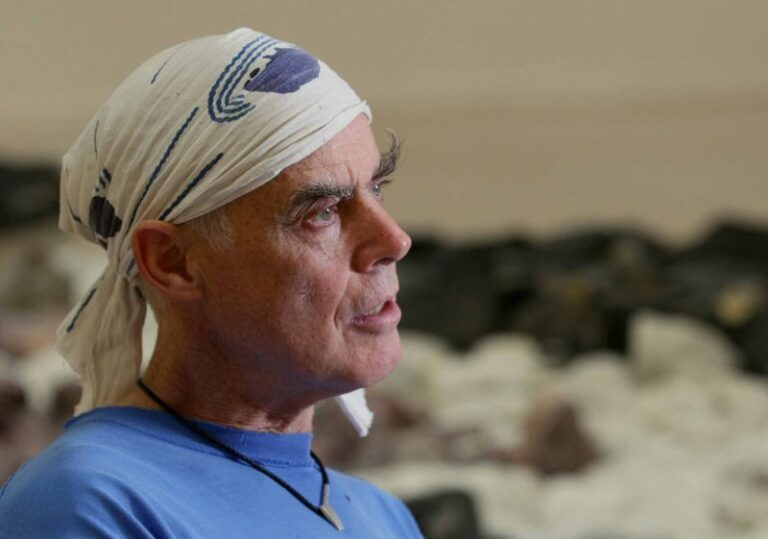
Walking in the mountains,fields,or along the seaside all over the world,Richard Long has been turning his walks into art for over almost 40 years. His vision of sculpture has contributed to great changes in conventional formative sculpture. After studying at art schools in his hometown Bristol and London in the 1960s,he started to produce artworks focusing on the relationship between man and nature. With his unique method of working,creating simple shapes like circles or lines in natural materials like wood or stone on his walks,and then documenting the work in photographs,maps or text works,Long has been a hugely influential figure. In 1989 he was awarded the Turner Prize,the most prestigious prize in British contemporary art scene and this year,at 64,Long was the subject of a large-scale solo exhibition at Tate Britain,London.
Biography
A large-scale solo exhibition of Richard Long’s work,Heaven and Earth was held this year at Tate Britain,London. The many positive reviews of the exhibition show how influential,relevant and important an artist he is.
His work,with its simple and powerful construction and rich spirituality,created by the conversation with nature,is truly worthy of the worldwide attention it attracts.
As an art student in London in 1967,Long created A Line Made by Walking,a photographic documentation of his walk through a grass field,bringing him to come to the forefront of contemporary art scene.
From the beginning he was "doubtful about conventional plaster or iron sculptures,"and over 40 years,he has been creating art in his own way,arranging stones or wood into simple shapes; circles,ellipses,crosses or straight lines. Sometimes he might pick flowers to make a cross shape in the grass,but his aim for his outdoor works is that his presence will be marginal and measured only by himself in photographs,maps or text works.
He has consistently produced works based on the subject of the relationship between man and nature,and is a major artist of Land Art Movement along with the American artists like Robert Smithson and Walter de Maria. Many of his works relate directly to the elemental human experience of nature.
From River Avon,Bristol,a familiar place since his childhood,to the Himalayan mountains,Sahara Desert,and Australian woods,Long’s walks are extensive. "Usually the best works are made by chance. If I make a wilderness walk,I can find unknown places,and each place gives me the idea for a new work. "
He often visits Japan and made a lot of works,including Inland Sea Driftwood Circle in Naoshima,Kagawa and Hemisphere Circle at Tokyo International Forum,Tokyo. He is much interested in Japanese culture,especially in the Zen gardens in Kyoto,saying,"When I make my stone sculptures,I wear my head scarf arranged with the design of of Ryoanji Rock Garden (a Zen rock garden in Kyoto) ".
Outdoor works naturally change with wind and rain,difference in temperature,or the passage of time,and soon disappear completely. Like ancient remains such as the megalithic Stonehenge and Nazca lines,Long’s work also stimulates viewer's imagination.
Though Long broke his leg in Scottish mountains two years ago,his creative power shows no signs of decline. The artist,now 64,who declares that outdoors is his studio,continues to travel with a heavy rucksack on his shoulder most of the year producing works of deceptive simplicity and profound beauty.
Chronology
-
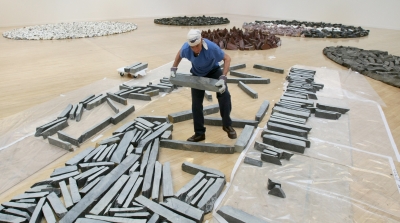
Richard Long at work on Stone Line
-
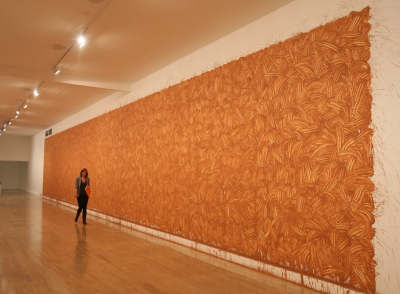
From Beginning to End
-
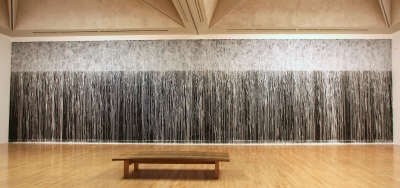
White Water Line
-
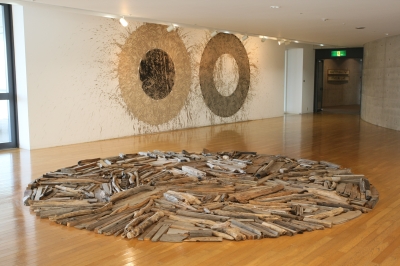
Inland Sea Driftwood Circle and River Avon Mud Circles by the Inland Sea
-
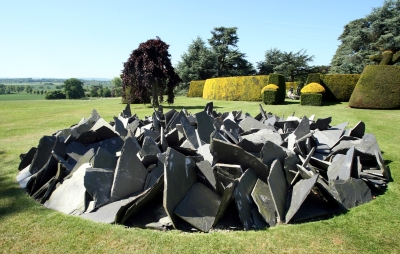
Ascott Circle
-
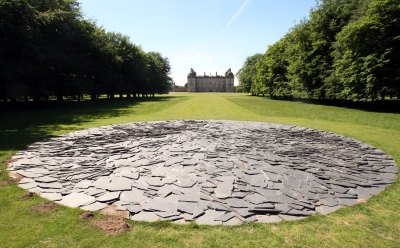
Full Moon Circle

